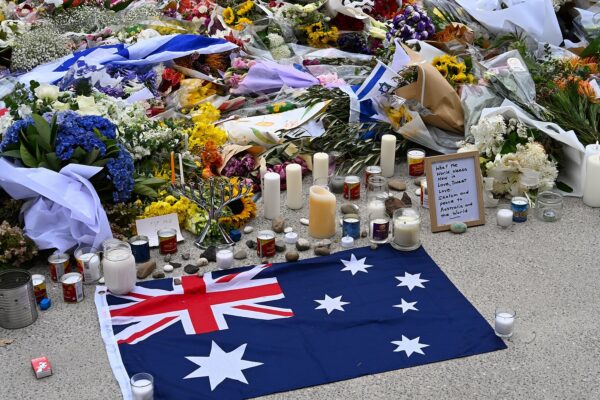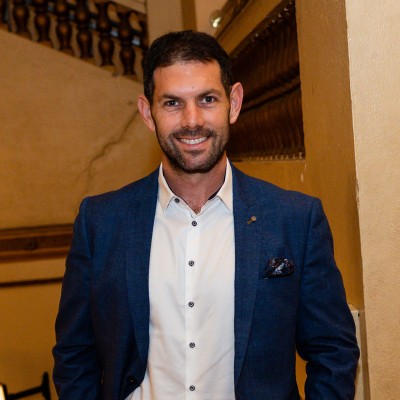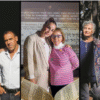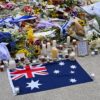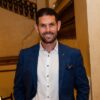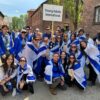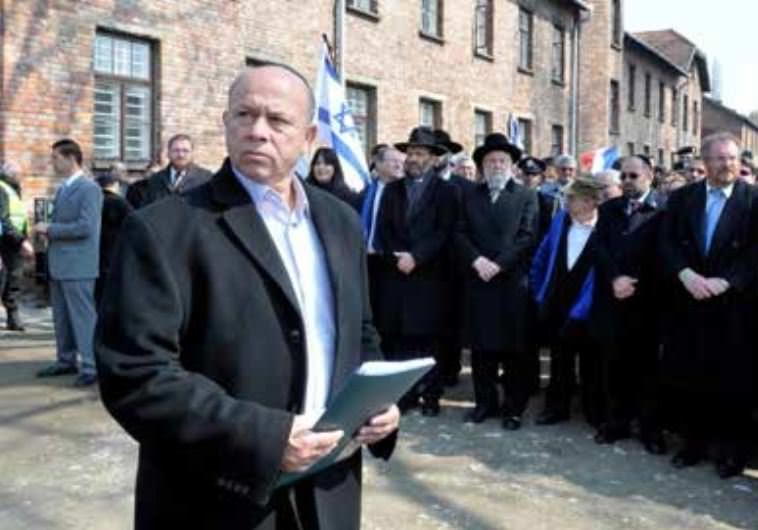
Shmuel Rosenman takes a long-term perspective on the place of the Holocaust in Jewish identity. Notwithstanding the fact that the generation of survivors is aging, and soon no one will be left alive to bear witness to the unspeakable tragedy of 1939 to 1945, Rosenman, who in 1988 was one of the founders of the March of the Living and continues to serve as the organization’s world chairman, is convinced that the Holocaust will remain fixed in Jewish memory.
He draws an analogy to the account of Napoléon Bonaparte in Poland in the summer of 1812. The heat was unbearable. The emperor was nervous. He was planning the conquest of Moscow, against the advice of his generals. Half of Le Grande Armée’s soldiers suffered from dysentery and typhus.
About 20,000 horses had already died.
The mayhem would be hell if it weren’t for the daily deliveries of the local Jewish merchants, who sold almost everything: food, clothing, wood, fodder and horses. They came every day, except on Saturday. But on Sunday, July 19, 1812, the Jews again didn’t show up.
“Where are they?,” asked the emperor, impatiently.
“In their synagogues, Sire,” answered his aide-de-camp, Count Ségur.
“What for? It’s not Saturday today.”
Ségur explained: “Sire, today is a day of mourning for them. It’s the 9th of Av, in their calendar. They fast and cry in memory of the destruction of Jerusalem and of the Temple.” The emperor seemed astonished.
He looked up and paused for a few seconds.
Then he said with his stern and assertive demeanor: “Gentlemen, a people that still cries for its motherland, 17 centuries after its destruction, will rebuild it.”
So too, the Holocaust will remain a key part of Jewish identity for many centuries, insists Rosenman, who teaches logistics and health administration at Bar-Ilan University.
He recalls how the process of memorializing unfolded. In 1985 French filmmaker Claude Lanzmann released his epochal documentary Shoah. The nine hour and 23-minute epic marked a turning point.
“We felt the importance of the movie and how it influenced teenagers,” he recalls. “So we decided to organize a one-time delegation of 1,500 11th and 12th graders to visit the concentration and death camps where Lanzmann had shot some of his interviews.
“Not to leave this to the classroom. To take it out of the classroom to see what really happened,” he remembers.
The timing was fortuitous. With the collapse of the Soviet bloc, travel in Eastern Europe was greatly simplified.
The reaction of the participants to the trip astonished the organizers. Yitzhak Navon, then Israel’s education minister, said every Jewish youngster should visit Auschwitz.
“According to the feedback, it would have been a mistake not to continue [annually],” Rosenman recalls.
The logistics were daunting. Poland in the years following the collapse of Communism didn’t have a tourism infrastructure.
Flights had to be chartered, accommodation arranged, kosher food imported. Timing tours to avoid overcrowding and maintain the quality of the educational programming required military precision.
But the MOTL prevailed. As of today, the program has had more than 250,000 participants from 52 countries.
“If a program runs for 28 years and every year more and more people would like to join, you must be doing something right,”- says Rosenman.
Rosenman stresses that not all of the participants are Jewish – in fact, he adds, today around half of those on the marches are non- Jews.
“We see this as an important message to the world, that despite the terrible genocide that Hitler and his henchmen perpetrated against the Jewish people, the lessons are universal: every person and every nation should speak out against genocide.
“Unfortunately the world has not learned much. We see in our time mass murders, killings, anti-Semitism. We live in a world of intolerance. Every participant in the March of the Living, Jew or gentile, should carry the torch of tolerance and speak out against racism, anti-Semitism and violence wherever they may occur.”
Key to the success of the March of the Living has been avoiding repetition, explains Rosenman. “The enemy of education is routine,” he says. “We are not a routine organization.”
Thus every year the MOTL has a theme or focus that sets it apart from all previous trips. In 2013, the MOTL brought 100 liberators of Nazi concentration camps. The following year marked the 70th anniversary of the destruction of Hungarian Jewry. MOTL participants rode the same railroad lines from Budapest to Auschwitz. 2015 marked the 70th anniversary of the Red Army’s liberation of Auschwitz.
This year’s theme is “The Double Entendre of Nuremberg.” A symposium will be held at Jagiellonian University in Kraków on May 4 examining the twin legacy of the Nuremberg racial laws enacted in 1935, and the Nuremberg War Crimes Trial, which took place a decade later.
Prof. Irwin Cotler and Prof. Alan Dershowitz are co-chairing the symposium, while Prof. Elie Wiesel is the honorary chairman. The conference program notes the March of the Living enjoys support from the Conference of Jewish Material Claims Against Germany. Clearly, the March of the Living has attained a place on the highest rung of Jewish communal life. Rosenman notes that his organization operates without funding from the State of Israel. The organization has five full-time staff members.
The MOTL has carried out follow-up studies on its participants. As the organization approached its 28th year, March of the Living International has published a study examining the effect that it had on participants. The study, conducted by Prof. William Helmreich, a highly respected sociologist and expert on ethnic identity who reaches at CUNY Graduate Center and the Colin Powell School at City College in New York, highlights the educational and religious changes that the program has inspired.
Of the population surveyed, most initially signed on to the program in order to better understand their Jewish culture. Many of the participants said the program has directly impacted them, inspiring many to visit, study, or move to Israel.
“WHAT’S MOST remarkable about the March is how deeply it impacts participants over a period of many years. These include life choices like selecting a mate, moving to Israel, and career choices. In addition, it greatly impacts not only on Jewish identity, but also on compassion toward other people as well,” Helmreich said of his findings.
Indeed, 54 percent of respondents said that the March had made them more tolerant towards other groups. For those who participated 10 or more years ago, 66% reported increased tolerance.
The study also found that 86% of the participants asserted the importance in their spouse being Jewish, and 91% in raising their children with some sort of Jewish education.
65% felt the importance of raising their children in a Jewish neighborhood.
90% of those surveyed also felt the March instilled in them the importance of reacting to confrontations with anti-Semitism, and 95% stated the March had strengthened their sense of Jewish identity. Indeed, Helmreich found that 54% of MOTL participants return to visit Israel within three years of their initial tour with the March of the Living.
“We are very pleased with the results of this study” says Rosenman.
“To think that the March is such a successful program in terms of ensuring and enhancing Jewish identity and in making people realize the importance of engaging as a Jew within their communities and caring for those outside of them, truly illustrates the goals that we had when initially forming the first March so many years ago. The International March of the Living looks forward to the next generation of participants and instilling in them these same values.”
The MOTL will hold its closing mega- event this year at the Armored Corps Memorial at Latrun at the end of Independence Day, May 13, to be attended by more than 5,000 participants. One needn’t be a sociologist to see how deeply moved the participants are, he says.
The March of the Living is “not a missionary organization,” concludes Rosenman.
“We are emphasizing our past, our present and our future. It’s a lesson – remember, never again, and don’t lose faith.”
The MOTL “can be done forever. It’s not just a chapter. It’s a major turning point.”
Originally published HERE

